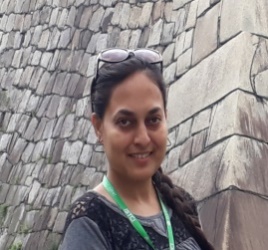Scientific Program

Tanushree Choudhury
PhD, VIT, India
Title: The Emerging Field of Clay Hybrid Membranes in Wastewater Treatment
Biography:
Dr. Tanushree Choudhury, (PhD in Applied Chemistry), now is an Assistant Professor of Chemistry, Member of Indian Institute of Metals. She got her BSc in Chemistry (Honours), MSc in Chemistry, Specialist in Physical Chemistry at Visva- Bharati University, Santiniketan, West Bengal, India, Applied Chemistry Doctor’s degree (PhD) at Indian Institute of Technology (ISM), Dhanbad, India. Dr. Tanushree Choudhury got Meritorious Student Award from Council of Scientific and Industrial Research (CSIR) in 2003, Junior Research Fellowship Award from Indian Institute of Technology (ISM), Dhanbad in 2003, Summer Research Fellowship Award from Indian Academy of Sciences, Bangalore in 2012, and Inclusion of bio data in Marquis Who’s Who in World in 2011 and 2012. Currently Dr. Tanushree Choudhury’s research focuses on development of nanoclay as catalyst in industrial applications, and in membrane technology.
Abstract
Most of NF membranes which are developed recently are composite membranes, whose support layer is covered with an active layer. Among different ceramic support materials that are currently used as support layer, α-alumina supports are integral part of the membrane which is made of artificial materials like alumina and thus adds to the high price of the membrane. This draws our attention in making low cost support material of natural clay which aims to be an excellent membrane support as it possesses high mechanical strength, high permeability, narrow pore size distribution and low manufacturing cost. Titania as active layer for ceramic membrane is preferred over Al2O3 membranes due to a slew of benefits ranging from its small crystallite size, self-cleaning property, to its being a highly efficient photocatalytic material. It has been observed that if Titania is immobilized on to clay support, its photocatalytic action increases tremendously. One of the problems encountered when photocatalysts are immobilized on support is the detachment of the microparticles from the support for high flow rates of liquid effluent. This can be overcome by using Montmorillonite clay as support material as it has extremely good binding capacity. Not enough effort has been made in literature to evaluate the specific features of these catalysts in relation to practical use and to optimize their design in relation to these characteristics. Thus optimization of such catalyst reactor may be helpful in separation of heavy metal ions from wastewater and also recover ions such as Pb2+ and Cd2+ which latch onto clay composite membranes.
- Green Energy and Renewable Resources
- Biomass and Bio Energy
- Material science and Nanotechnology
- E-Wastes Recycling and Management
- Green Processing and Solar Energy

